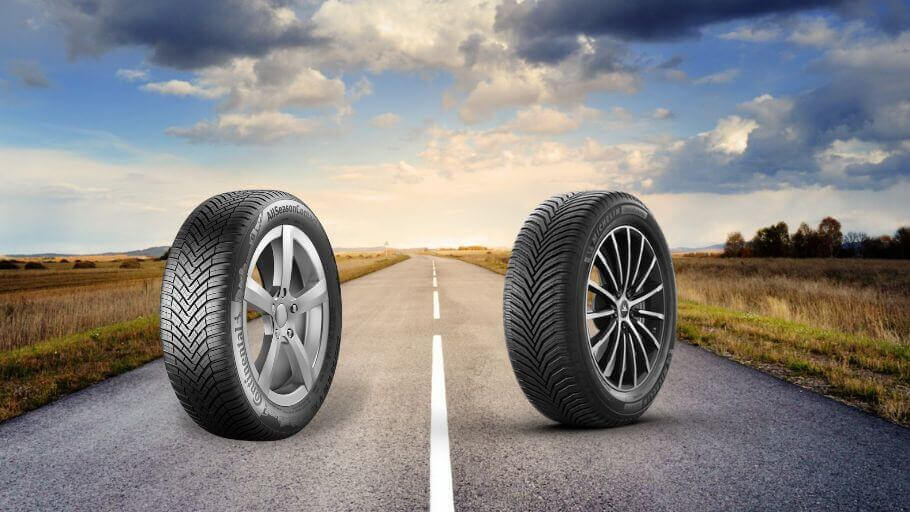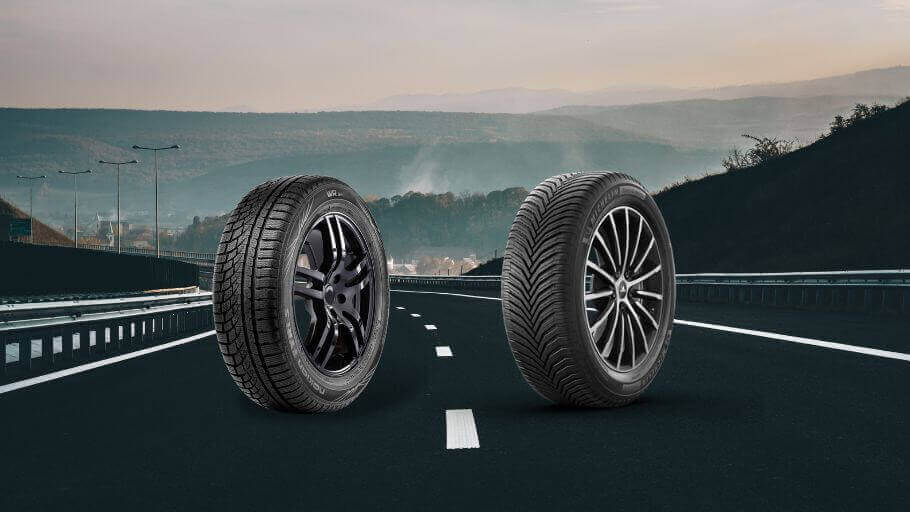Are you interested in the best tire brands on the market? Then you've probably heard of Bridgestone and Michelin. If you are trying to decide which brand is right for you, you have come to the right place!
Blackcircles Canada is proud to present this Bridgestone vs Michelin comparison to help you make the best decision.
Their History
Both brands boast a very long and successful history. While Michelin has been innovating for many years, Bridgestone has quickly caught up and has become one of the best brands in the world. Let's take a look at the history of Bridgestone vs Michelin.
Bridgestone Tires
The Bridgestone Tire Company Ltd brand was founded in Japan in 1931 by Shojiro Ishibashi. By the 1950's, the brand had already become the leading manufacturer in the country, adopting the radial structure in the 1960's.
Despite its success, the company wished to keep growing: in 1965, it opened its first plant in Malaysia as well as a marketing subsidiary in the United States, where the automobile industry was growing quickly. What’s more, in 1988, Bridgestone acquired the American brand Firestone.
At the same time, Bridgestone was awarded the Deming Prize in 1968 for its superior level of excellence.
After its merger with Firestone, the company introduced many innovations:
- The dual rubber tire
- The triple rubber tire
- The Multicell compound
- The Runflat tire, in partnership with Continental
Its innovation and excellence earned it the " Manufacturer of the Year " award in 2008. Today, Bridgestone is the brand with the highest sales, just ahead of Michelin, which overtook it in 2019.
Bridgestone is committed to sustainable development: it aims to reduce the amount of natural resources used in production and to limit waste. In fact, six facilities have achieved zero waste to landfill status.
 L'Almanach des Sports 1899, Public domain, via Wikimedia Commons
L'Almanach des Sports 1899, Public domain, via Wikimedia CommonsMichelin Tires
Michelin has a longer history in the tire industry, as it was established in 1889. That makes it over 130 years old! It was founded in Clermont-Ferrand, France, by the brothers André and Édouard Michelin.
Their first innovation, launched in 1891, was the removable bicycle tire. It was followed by the first car tire in 1895. The well-known Michelin man (Bibendum) was born shortly after, in 1898, and was inspired by a pile of tires.
Shortly afterwards, factories were set up in Turin, Italy, and then in the United States. Michelin also became responsible for equipping 2,000 aircraft during the First World War. After the war, Michelin's innovations flourished:
- The railway tire (1929)
- The radial carcass (1946)
- The "green" tire (using silica) (1992)
- The versatile summer/winter tire (2015)
With 102 Grand Prix victories, Michelin is renowned for its high-performance tires. At the same time, the brand has acquired other tire brands, most recently Uniroyal and BF Goodrich. Today, the brand operates factories in 17 countries.
Like Bridgestone, the brand is committed to sustainability with its VISION concept, revealed in 2017.
Innovations and Technology
Both brands are working towards a greener future, but what about existing technologies used for their tires? Let's take a look at how Bridgestone vs. Michelin compare when it comes to innovation and technology.
Bridgestone Technologies
You should know that, even if Bridgestone is not as old as Michelin, the brand was able to distinguish itself with its technologies and innovations. For example, its first radial tire in 1967 featured a design unique design that was not copied from Michelin.
The brand is also responsible for several modern inventions, including Runflat tires developed with Continental in response to Goodyear's run-flat tires. Bridgestone tires allow you to drive 50 miles after a puncture!

Among the technologies developed by the Japanese brand is the Multi-Cell compound, which features white particles and microscopic bubbles with hydrophilic properties. As a result, water is not only drained through the grooves, but also absorbed and ejected for even better traction.
The compound used in Bridgestone tires also features Nano Pro-Tech technology, designed to make the tires more capable and fuel-efficient.
Some tires also feature QuietTrack technology for a quieter ride or the FuelSaver compound for an even lower rolling resistance.
In short, Bridgestone is all about quietness, performance and fuel efficiency. However, each model has its own characteristics so you can find exactly what you're looking for.

Michelin Technologies
With well over a century under its belt, Michelin has developed innovative products through its network of research and testing centers. Comfort, stability and performance are three of its priorities when developing new models.
Some technologies are designed to reduce road noise, such as the Michelin Acoustic Technology and the PIANOp Acoustic Tuning technology. Comfort is also a priority, which is achieved by reducing noise and vibrations with Comfort Control technology.
As for performance and durability, there are plenty of proven technologies, including:
- 3-D Stabiligrip technology, with biting sipes for improved acceleration and braking;
- Eco'N'Grip, reducing rolling resistance for superior fuel efficiency;
- Helio+ technology, a silica-gel and sunflower-oil based tread compound for increased elasticity.
Infinicoil, Powercoil and Duracoil technologies work together in the Michelin tire casing to improve its toughness, durability and capabilities. As a result, the casing, the tread and the materials used work together to deliver durable and comfortable tires.
In fact, Michelin tires are known to last longer than any other tire on the market!
Comparing their Warranties
Both Bridgestone and Michelin are among the most reliable and well-established companies in the world, and both offer competitive warranties. The satisfaction guarantee, for example, which usually lasts 30 or 45 days with competitors, lasts 60 days with Michelin and 90 days with Bridgestone!
Of course, the mileage warranty depends on the model, but both brands offer excellent warranties to back their durable and long-lasting tires. At Bridgestone, customers benefit from the Platinum Pact limited warranty with free replacement for 3 years from purchase or 4 years from manufacture.
In addition to the limited warranty, Michelin offers 3-year roadside assistance for flat tires, fluid delivery, unlocking and battery recharging. In other words, the satisfaction guarantee lasts longer with Bridgestone, but the roadside assistance from Michelin cannot be overlooked!
In short, both brands are all about high-performance tires. At Michelin, durability is prioritized, while at Bridgestone, low rolling resistance (and fuel economy) is the most important factor, depending on the model. The table below summarizes how Bridgestone vs. Michelin compare:
| Feature | Bridgestone | Michelin |
|---|---|---|
| Founding year | 1931 | 1889 |
| Country | Japan | France |
| Main advantages | Fuel economy, comfort, performance | Durability, performance, quiet ride |
| Satisfaction Guarantee | 90 days | 60 days |
| Feature | Bridgestone |
|---|---|
| Founding year | 1931 |
| Country | Japan |
| Main advantages | Fuel economy, comfort, performance |
| Satisfaction Guarantee | 90 days |
| Feature | Michelin |
|---|---|
| Founding year | 1889 |
| Country | France |
| Main advantages | Durability, performance, quiet ride |
| Satisfaction Guarantee | 60 days |
Whether you prefer Bridgestone tires or Michelin tires for your vehicle, find the perfect model for you at blackcircles Canada!








